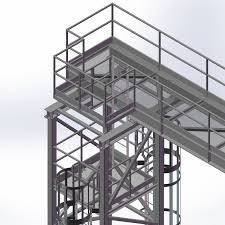How Point Cloud to BIM Drawing Services Enhance Design Accuracy
In today’s fast-paced construction and architectural landscape, accuracy is not just a requirement—it's a strategic advantage. With complex building structures and tighter project deadlines, design precision has become essential to ensuring quality, reducing risks, and avoiding unnecessary costs. Point Cloud to BIM Drawing Services have emerged as a powerful solution, enabling stakeholders to translate real-world site data into highly accurate digital models and drawings.
What Are Point Cloud to BIM Drawing Services?
Point Cloud to BIM involves converting 3D laser-scanned data—commonly referred to as a point cloud—into detailed and intelligent Building Information Models. These scans capture millions of data points representing the physical space, offering exact measurements of dimensions, shapes, and spatial relationships. Once converted into BIM, this data becomes the foundation for creating architectural, structural, and MEP drawings with unmatched precision.
These services are particularly valuable in renovation projects, heritage restoration, industrial plant upgrades, and infrastructure development, where traditional documentation is often incomplete or inaccurate.
Enhancing Design Accuracy from the Ground Up
The primary benefit of Point Cloud to BIM Drawing Services is the significant enhancement in design accuracy. Working directly from real-world scans eliminates guesswork and reduces dependency on outdated drawings or manual surveys. The result is:
-
Reliable as-built documentation
-
Accurate dimensioning and geometry
-
Better coordination across disciplines
-
Early detection of design and structural clashes
This early-stage accuracy allows architects, engineers, and contractors to make informed decisions, minimizing the need for rework and preventing costly on-site adjustments.
The Role of Laser Scanning in Capturing Reality
Before BIM modeling begins, laser scanning is used to capture detailed and accurate 3D data from the physical environment. This non-invasive method collects millions of data points, making it ideal for complex structures, heritage sites, or buildings without existing documentation. Understanding the laser scanning process helps project teams grasp the importance of the data quality used in BIM creation.
Cost and Time Benefits
Incorporating a section on ROI (return on investment) can show how Point Cloud to BIM services help reduce project costs and timelines. With accurate data and fewer on-site revisions, project managers can schedule more efficiently, procure materials accurately, and avoid expensive rework.
Reducing Risk and Enhancing Compliance
Accurate BIM drawings from point clouds can help reduce construction risks, avoid legal disputes over errors, and ensure compliance with local building codes and standards. Models can be reviewed and approved digitally, improving transparency and reducing paperwork.
Conclusion
Point Cloud to BIM Drawing Services play a crucial role in enhancing design accuracy across all types of construction projects. By grounding design in precise, real-world data, they reduce errors, improve coordination, and support smarter, more efficient construction workflows.
Whether it's for new builds, renovations, or facility management, integrating Point Cloud to BIM processes ensures better design accuracy, improved resource planning, and long-term project value. As the AEC industry continues to embrace digital transformation, partnering with experienced BIM service providers becomes essential for staying ahead—delivering not just buildings, but smarter built environments.




Comments
Post a Comment